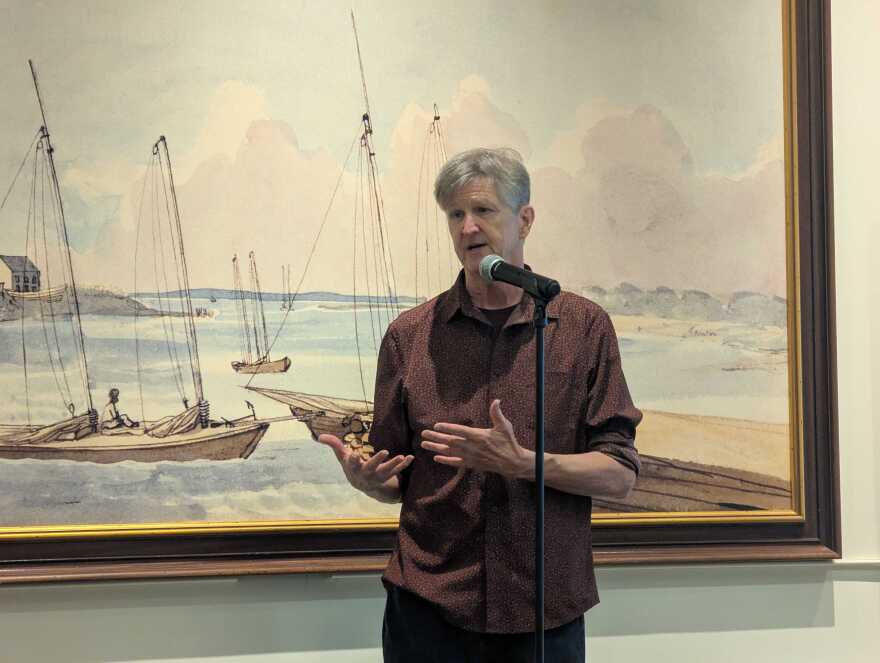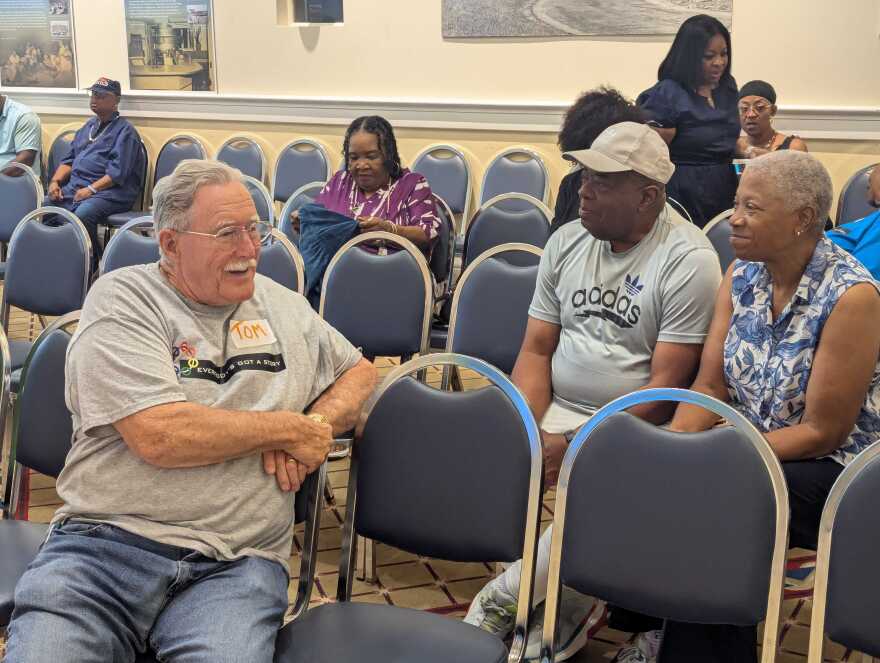Andy Offutt Irwin wants people to lean into each other, instead of away.
He’s found that there’s hardly a better way to make that happen than through humor and a good story.
“When we scooch a little more forward in our chair and put our elbows on our knees and clasp our hands and really listen and talk,” Irwin said, “that’s when good stuff happens.”
Irwin was among several nationally renowned artists at the third Hampton Storytelling Festival last weekend.
Back for his second year, Irwin got things started at the Hampton History Museum with his popular “Sister True” story to a crowd of a few dozen on Friday morning. It follows his fictional aunt, Marguerite Van Camp, an 85-year-old white woman from Georgia.
But the morning became more special when the audience broke into groups to discuss and digest the tale’s themes of race, class and growth, moderated by the Virginia Center for Inclusive Communities.
“That’s when performing changes to something more intimate,” he said.

Having more conversations with, rather than at, people is the reason behind the festival, said Janice “Jay” Johnson. She and Sheila Arnold are the local storytellers who organized it in 2023.
“We wanted people to find the commonality in their lives,” Johnson said.
She calls stories “connectors” that, similar to music, can have the power to bring people together.
“What we’re really looking for is the value of each of us to the common good,” Johnson said. “Stories, I think, can help that to happen.”
Far from dying out, the art of storytelling is evolving in an increasingly digital world. The National Storytelling Festival, for example, draws thousands, as some people turn to TikTok for their storytime fixes. Others crave local story circles, such as Johnson and other regulars at the monthly story swap at Hampton Christian Church.
“People are still dealing with the pandemic and feeling alone,” Johnson said. “When they come to a storytelling, they know that they’re part of something bigger than themselves.”
Irwin believes that face-to-face connections are an important part of his work; he calls it “high touch, not high tech.”
“I think that’s what people crave,” Irwin said. “Real eye contact, connection; and if I can help bring that about, especially with something like ‘Sister True’ which is talking about that nervous race relation, which is still nerve-wracking sometimes, then I’m doing my job.”
After Irwin’s story, festival-goers talked about how the story led them to reconsider others’ experiences and the role of humor in including or excluding others. Irwin says it’s become his mission to inspire that level of dialogue.
“If being funny and telling stories and crafting narratives makes that happen, so be it,” he said.

The festival looks different each year, Johnson said. In addition to growing in size, storytellers bring different styles and perspectives.
But amid changing faces, one thing stays the same, Johnson said.
“Everybody’s got a story and so we want to hear people’s stories.”


